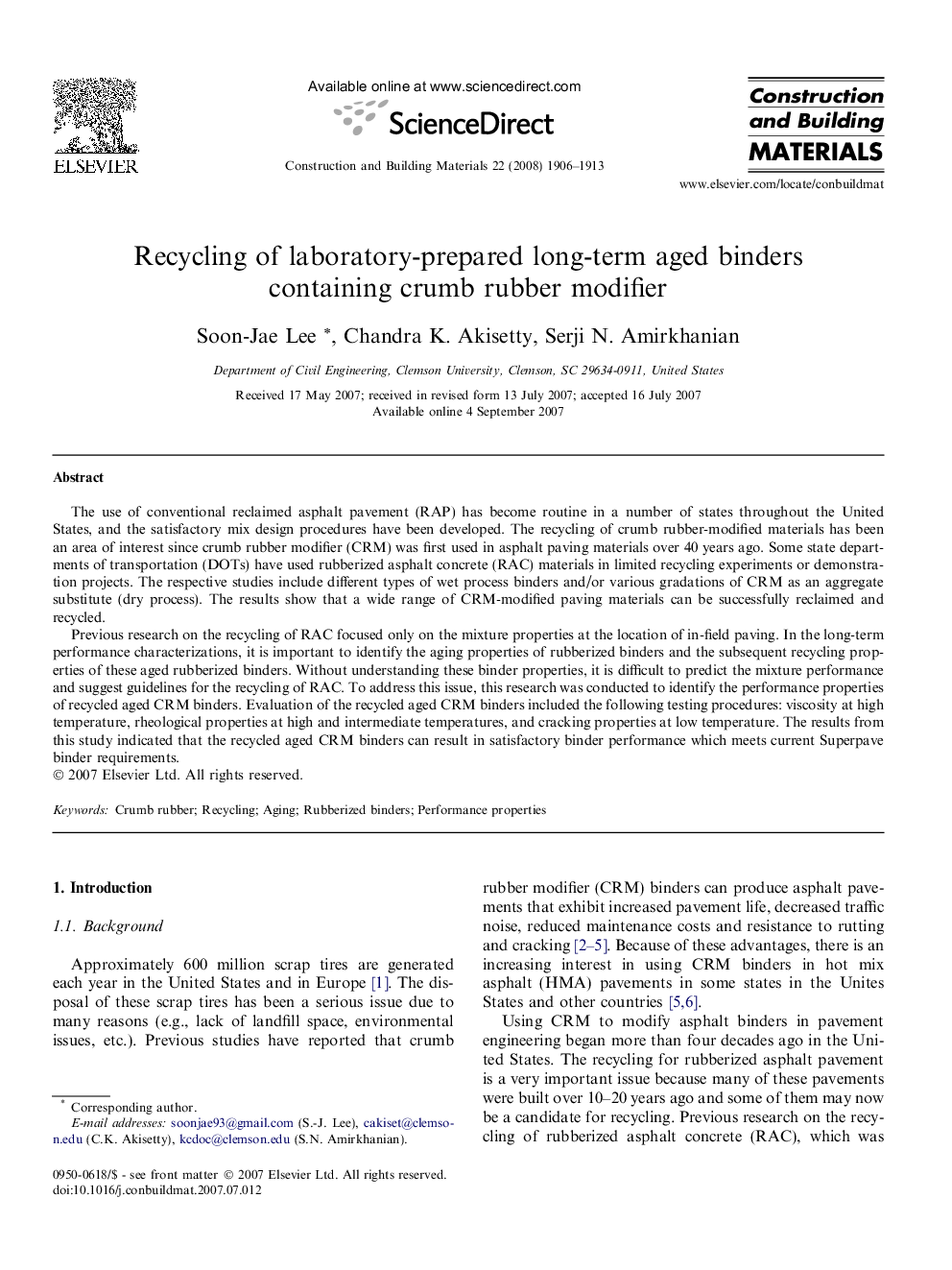| Article ID | Journal | Published Year | Pages | File Type |
|---|---|---|---|---|
| 260394 | Construction and Building Materials | 2008 | 8 Pages |
The use of conventional reclaimed asphalt pavement (RAP) has become routine in a number of states throughout the United States, and the satisfactory mix design procedures have been developed. The recycling of crumb rubber-modified materials has been an area of interest since crumb rubber modifier (CRM) was first used in asphalt paving materials over 40 years ago. Some state departments of transportation (DOTs) have used rubberized asphalt concrete (RAC) materials in limited recycling experiments or demonstration projects. The respective studies include different types of wet process binders and/or various gradations of CRM as an aggregate substitute (dry process). The results show that a wide range of CRM-modified paving materials can be successfully reclaimed and recycled.Previous research on the recycling of RAC focused only on the mixture properties at the location of in-field paving. In the long-term performance characterizations, it is important to identify the aging properties of rubberized binders and the subsequent recycling properties of these aged rubberized binders. Without understanding these binder properties, it is difficult to predict the mixture performance and suggest guidelines for the recycling of RAC. To address this issue, this research was conducted to identify the performance properties of recycled aged CRM binders. Evaluation of the recycled aged CRM binders included the following testing procedures: viscosity at high temperature, rheological properties at high and intermediate temperatures, and cracking properties at low temperature. The results from this study indicated that the recycled aged CRM binders can result in satisfactory binder performance which meets current Superpave binder requirements.
